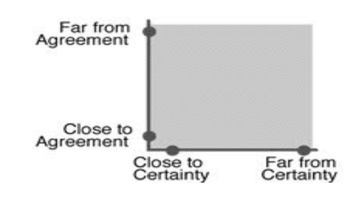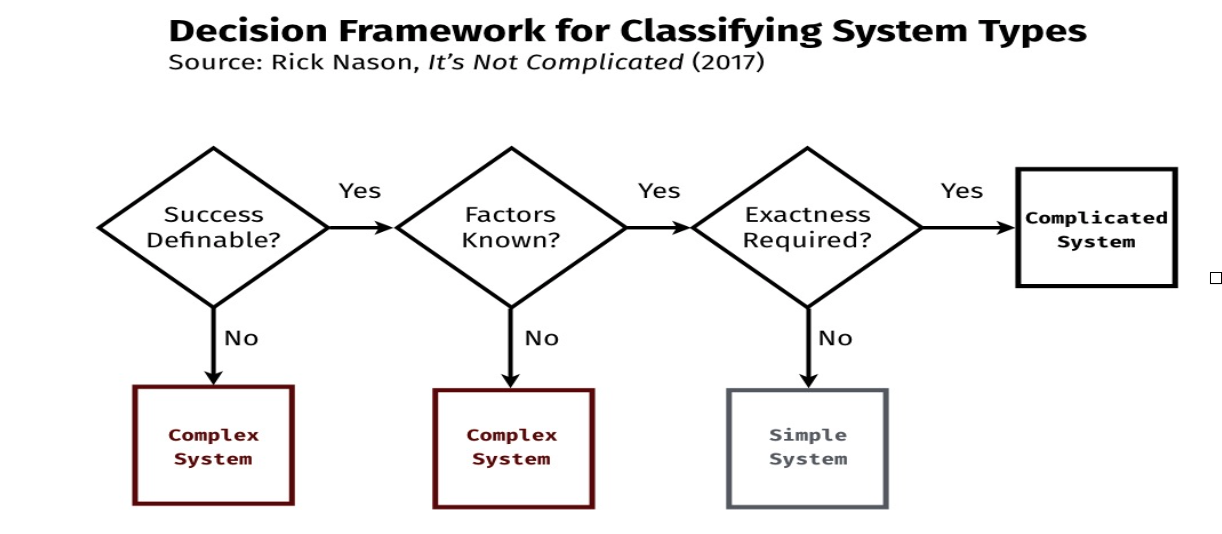Risk is a seemingly simple word that confounds most organizations when it comes to achieving strategic outcomes. We prefer the word uncertainty. Increasingly, the role of business leaders will be to help others in their organizations learn how to frame, evaluate and communicate uncertainty.
- Ralph D. Stacey, Complexity and Organizational Reality
In our view, risk management is the study of how humans choose in a world of uncertainty. Making decisions based on estimates and partial knowledge is something we do every day. As patients, we may be asked to consent to a new medical treatment or as a consumer we might need to decide whether to buy a genetically modified product. As voters, scientific uncertainty can impact which policies or candidates we support on election day. Framing, evaluating, and communicating with other people about uncertainty, however, is something that few of us have been educated or trained to do.
Helping organizations develop the capacity to make good decisions in the face of uncertainty has been the focus of Ralph Stacey’s career. Stacey began his career as a business executive in the steel and construction industries where he focused on economic forecasting and strategic planning. He then worked as an investment strategist in the finance industry before embarking on a lengthy career as a leading scholar on complexity and business management. Stacey’s scholarship was an outgrowth of his experiences in industry and it focused on why business leaders struggled with forecasting the consequences of their decisions and why, given the frequent surprising and often unwanted consequences of their actions, they carried on with the same planning processes.
The art of risk management is having an array of approaches for dealing with uncertainty and being aware of when to use each approach. To help with this art, Stacey proposed a matrix with two identifiable dimensions shown below: certainty (i.e., predictability of events) and the level of agreement about an issue or decision within the group.
Efficiency and effectiveness go hand in hand with uncertainty that can be classified as simple or complicated. Simple or complicated is often about a physical process that involves making materials do what we want. A type of simple process is a person following a recipe to bake a cake. Recipes are deemed valued but not essential instructions to producing a standardized product, they are tested to assure easy replication, the best recipes give good results every time, and repeated recipe-following yields expertise and increases the likelihood of good results every time. A complicated process typically involves a group of experts who coordinate many sets of instructions (i.e., recipes) to achieve a specified outcome such as constructing a building or sending a rocket to the moon. Because complicated products like buildings or rockets are similar in critical ways, there is a high degree of certainty of outcome. Underlying both a simple and complicated process is a plan that can be broken down into steps, studied and managed separately, and reassembled to construct the whole. Additionally, simple and complicated tasks can be digitized, and, in turn, automated by a computer or robot. Automation (e.g., self-driving vehicles) further increases the safety and efficacy of simple and complicated processes.
Unlike following a recipe (simple process) or sending a rocket to the moon (complicated process), raising a child is a highly uncertain and nonformulaic process. Put simply, parenting is messy. Every child is unique. Raising one child successfully gives no assurance of success with the next. Expertise can help but family relationships are more important. Parents learn quickly that child-rearing is complex because people are unique, and they don’t always respond to their ever-changing environment in the same way.
In summary, the three contexts for uncertainty are simple, complicated and complex. In simple and complicated contexts, cause and effect is either known or can be learned through analysis. The role of the business leader is to provide direction as needed, develop and improve work practices, and where needed assemble the requisite experts to better understand cause and effect. Sustaining a business, like raising a child, is complex. The space of complexity is one of constant flux, unpredictability and no generally applicable “right “answers. Rick Nason, one of our favorite risk management thinkers, has created the following framework to better understand the types of uncertainty.




 RSS Feed
RSS Feed